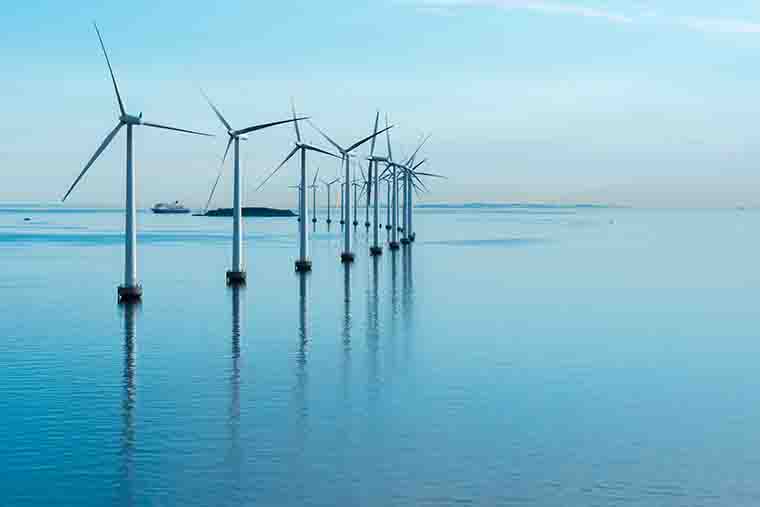Maritime transport is essential for global trade, but it is also one of the largest emitters of greenhouse gases. To address this issue, the sector is exploring various renewable energy sources. How can renewable energies in maritime transport be important and transcendent?
Is Sustainable Maritime Transport Possible?
Maritime transport accounts for approximately 90% of global trade, making it the backbone of the global economy. However, its reliance on fossil fuels has resulted in a significant environmental impact. According to the International Maritime Organization (IMO), the maritime sector is responsible for around 3% of global CO₂ emissions. In light of this reality, the key question is: Is sustainable maritime transport possible?
The answer to this question is not simple, but the industry is taking concrete steps to reduce its carbon footprint. The IMO has set an ambitious target: to reduce the carbon intensity of international maritime transport by 40% by 2030 compared to 2008 levels. To achieve this goal, various technological and energy solutions are being explored and developed.
What energy alternatives are already used in sustainable maritime transport?
As efforts to decarbonize maritime transport continue, several promising energy alternatives have emerged. Among them are advanced biofuels, synthetic fuels, solar energy, and renewable hydrogen. These alternatives not only help reduce CO₂ emissions but are also compatible with existing infrastructures.
Advanced biofuels and synthetic fuels
Advanced biofuels are made from biological waste, such as agricultural or domestic waste, and have the potential to reduce CO₂ emissions by up to 90%. They are one of the most viable short-term solutions due to their compatibility with current ship engines.
Another alternative gaining ground is synthetic fuels, also known as e-fuels. These fuels have the advantage of being carbon-neutral, as they are produced using renewable energy to capture CO₂ from the atmosphere. This means that the CO₂ emitted during combustion is offset by the CO₂ captured during production, achieving net-zero emissions.
Solar Energy
Solar energy is also being explored as an alternative for powering ships. An innovative example is the Bahía Zero project in Santander Bay, Spain. Here, a passenger catamaran fully powered by solar energy makes the journey between Santander and Camargo. This project demonstrates the potential of solar energy on short routes, although the current limitation remains the autonomy of these vessels.
The use of solar energy in maritime transport is on the rise, especially in recreational boats and small commercial routes. Installing solar panels on ships allows harnessing solar energy to generate electricity and reduce reliance on fossil fuels. However, like other renewable technologies, solar energy still faces challenges in terms of capacity and efficiency on long-distance routes.
What energy alternatives are already being used in sustainable maritime transport?
As efforts to decarbonize maritime transport continue, several promising energy alternatives have emerged. Among them are advanced biofuels, synthetic fuels, solar energy, and renewable hydrogen. These alternatives not only help reduce CO₂ emissions but are also compatible with existing infrastructures. Additionally, these innovations can benefit sectors that rely on efficient logistics for perishable products, ensuring freshness and quality while minimizing environmental impact.
High-Tech Sails
Wing sails, which resemble airplane wings, are an example of how sail technology is being reinvented. These sails are designed to maximize wind capture, allowing ships to navigate using less energy. A notable example is the Oceanbird cargo ship by the Swedish shipping company Wallenius Marine, which plans to use these sails to reduce emissions by 90% compared to conventional cargo ships.
AlfaWall Oceanbird, a joint venture between Wallenius Marine and Alfa Laval, is leading the development of this technology. This solution is expected to be implemented in commercial vessels by 2025, marking an important step towards sustainability in maritime transport..
Renewable Hydrogen: The Fuel of the Future
Renewable hydrogen is emerging as one of the most promising alternatives for decarbonizing maritime transport. This gas is produced by water electrolysis using renewable energy, making it a clean energy source. Although its large-scale implementation still faces technical and economic challenges, the first projects are beginning to demonstrate its viability.
One of the most innovative examples is the Energy Observer, a ship that has sailed thousands of kilometers using hydrogen produced from seawater, along with solar and wind energy. This pioneering project shows how hydrogen can be a viable solution for powering vessels, especially in combination with other renewable energy sources.
Additionally, the first hydrogen-powered cruise ships, a project by Fincantieri and Explora Journeys, are expected to be launched in 2027 and 2028. These ships will mark a milestone in maritime transport history, as they will be the first of their kind to use hydrogen as the primary energy source.
Other Technological Advances in Sustainable Maritime Transport
In addition to renewable energies, other technologies are being developed that contribute to the sustainability of maritime transport. The electrification of ports is a key example. The Port of Barcelona, with its Nexigen Plan, is working on the electrification of docks so that ships can turn off their auxiliary engines and use electric power while docked. This project is an important step towards reducing emissions in port operations.
Another relevant innovation is the use of electric batteries to power ships. In 2015, Norway launched the MS Ampere, a fully electric ferry that operates on short routes. This type of vessel is ideal for short-distance journeys, where the limited range of batteries is not an issue.
Challenges and Future Prospects
Despite the advances, the transition to fully sustainable maritime transport faces several challenges. One of the main challenges is the cost of implementing new technologies and the need for adequate infrastructure. Additionally, the availability of renewable energy sources on a global scale remains a limitation.




